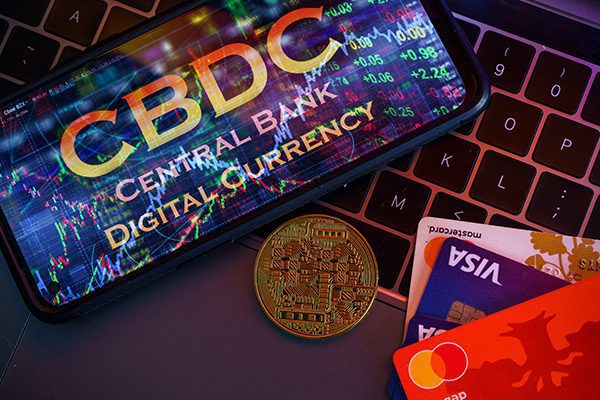South Korea stands at a digital crossroads, pausing its Central Bank Digital Currency (CBDC) Phase 2 testing as stablecoins steal the spotlight. On June 26, 2025, the Bank of Korea (BOK) hit pause on Project Han River, citing $3.7M per-bank costs and a push for won-pegged stablecoins, per cryptoninjas.net. With 18M crypto-active South Koreans and a new stablecoin bill, the nation is shifting gears. This guide unpacks the pause, the stablecoin surge, and what it means for you!

Why South Korea Paused CBDC Testing
The BOK’s Project Han River, launched in April 2025, let 100,000 citizens test digital won payments at stores like 7-Eleven, per cointelegraph.com. Phase 2, set for Q4 2025, aimed to add merchant payments and transfers but was halted due to high costs and unclear profits, per bitdegree.org.
1. High Costs for Banks
Each of the seven banks, including KB Kookmin and Shinhan, spent ₩5B ($3.7M) on Phase 1, per bitcoinethereumnews.com. Without a clear business plan, banks pushed back, calling the project “on the verge of collapse,” per coincentral.com.
2. Stablecoin Momentum
President Lee Jae-myung’s push for won-pegged stablecoins, backed by a bill with a ₩500M ($370,000) equity threshold, shifted focus, per kaohooninternational.com. Banks see stablecoins as a faster, profitable path, per @l3olanza.
The Stablecoin Surge in South Korea
Stablecoins, pegged to the won, are South Korea’s new digital darling, with eight banks like Woori and NongHyup planning a 2026 launch, per coinedition.com. This pivot aims to reduce reliance on USDT and USDC, which hit ₩57T ($42B) in Q1 2025 trading, per crypto.news.
1. New Stablecoin Bill
The Democratic Party’s bill, led by MP Min Byeong-deok, allows firms with ₩500M to issue stablecoins, ensuring monetary sovereignty, per fxleaders.com. Kakao and Naver are also applying for stablecoin trademarks, per bitcoinethereumnews.com.
2. Regulatory Caution
BOK’s Deputy Governor Ryoo Sang-dai calls for a phased, bank-led stablecoin rollout to avoid Terra’s 2022 collapse, per financemagnates.com. This cautious shift reflects lessons from past crypto crashes, per @BInodes_.

Market Reactions to the CBDC Pause
The BOK’s decision rattled markets, with fintech stocks like Kakao Pay dropping 7-9.3% and LG CNS falling 10.8% on June 30, per cryptoninjas.net. Meanwhile, KB Financial Group rose 0.8%, betting on stablecoins, per cointelegraph.com.
1. Fintech Stock Dips
Stablecoin uncertainty hit Kakao Pay (-7%) and Hecto Financial (-5%), reflecting investor jitters, per coinedition.com. The market fears regulatory delays, per @The_NewsCrypto.
2. Bank Stocks Hold Steady
Banks like Shinhan (+1.6%) and KB Financial (+0.8%) gained, signaling confidence in their stablecoin plans, per moneycheck.com. This shows a split in market sentiment, per @CryptoMagazine9.
Risks of the Stablecoin Shift
While stablecoins shine, South Korea’s digital crossroads has risks, per ledgerinsights.com.
1. Regulatory Uncertainty
The stablecoin bill is still in progress, and unclear rules could delay launches, per crypto.news. The Terra collapse looms large, per @solidintel_x.
2. Market Volatility
Stablecoin hype drove USDT and USDC to $42B in Q1 2025 trading, but volatility risks remain, per fxleaders.com. A rushed rollout could spark instability, per @UnknowTraderAi.
How to Navigate South Korea’s Crypto Shift
Want to ride this digital wave? Here’s how to stay safe at the crossroads, per binance.com.
1. Use Trusted Exchanges
Trade stablecoins like USDT or future won-pegged tokens on Upbit or Bithumb, per coinmarketcap.com. Verify URLs to avoid scams, per @RoundtableSpace.
2. Start Small
Invest $10-$50 in stablecoins via Trust Wallet, per bitget.com. Monitor news on coingecko.com for updates, per @Cointelegraph.

Tips for Crypto Beginners
Stay steady at South Korea’s digital crossroads with these tips, per coindesk.com.
1. Stay Informed
Follow @CoinDesk and 99bitcoins.com for stablecoin and CBDC updates. It’s like checking the map at a crossroads, per @l3olanza.
2. Secure Your Assets
Store stablecoins in a Ledger wallet, per bitrue.com. It’s like locking your valuables at a busy intersection, per @The_NewsCrypto.
Will Stablecoins Outpace CBDCs in South Korea?
South Korea’s pause on CBDC Phase 2, with its $3.7M bank costs and unclear path, signals a pivot to won-pegged stablecoins, backed by a ₩500M bill and eight banks, per coinedition.com. With $42B in stablecoin trading and Kakao Pay’s 7% dip, the market is watching, per cryptoninjas.net. Trade on Bithumb, follow @S_korea_cbdc, and see if stablecoins lead South Korea’s digital crossroads or if the CBDC makes a comeback by 2026!























